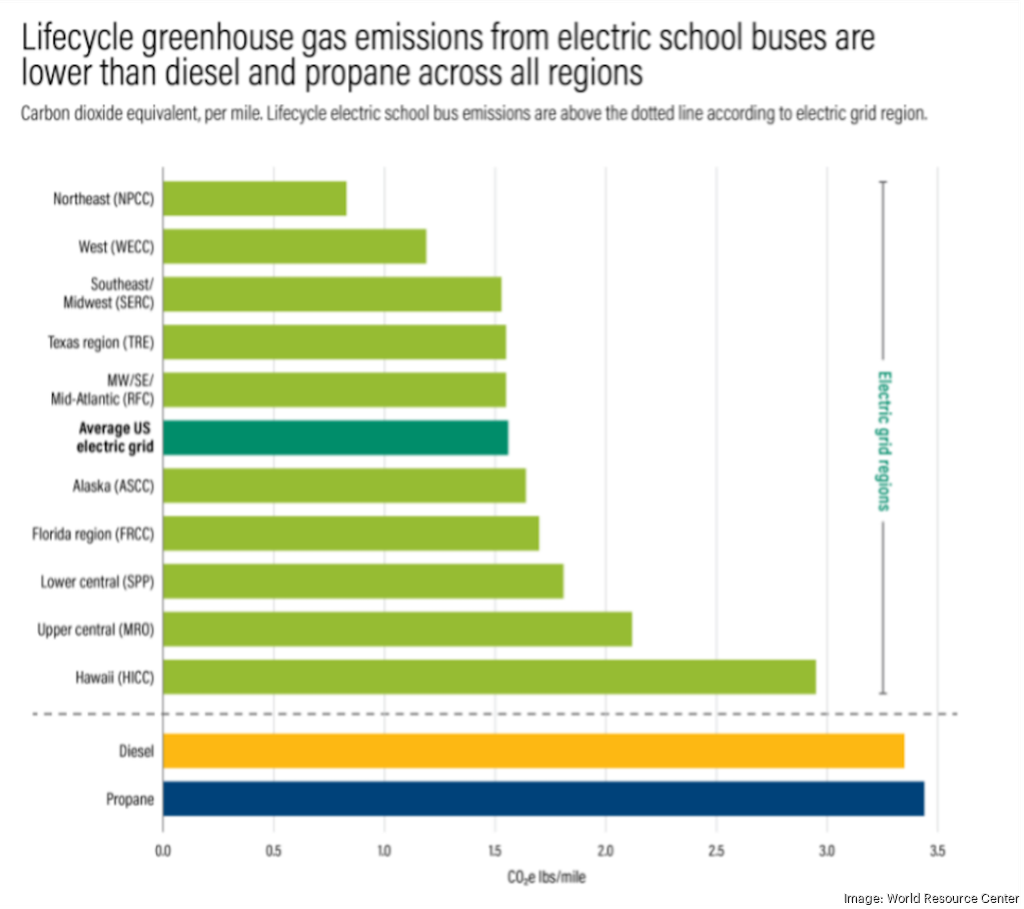Since 2022, the United States Environmental Protection Agency (EPA) has set aside $5 billion to be allocated to school districts across America as part of the Clean School Bus program.
The goal of the program, which runs through 2026, is to replace the 500,000 diesel-fuel engine school buses in circulation across the United States with an all-electric fleet. Progress and adoption have been slow, and as of December 2023, just 4,000 electric buses have been placed into circulation, according to the Electric School Bus Initiative Tracker from the World Resources Institute.
Some states are doubling down on the initiative, though, and have enacted binding measures that require some or all of the state’s school buses to be electric within the next 10 to 15 years. New York State is one of six leading the charge with aggressive electrification goals that prohibit the purchase of diesel engine buses after 2027 and are pushing districts to be 100% electric by 2035.
Studies show that while diesel currently powers 90% of school buses in the United States, the exhaust from fuel has been linked to serious health and developmental conditions. Communities of color and low-income populations are at the highest risk and are more likely to depend on school bus transportation. Therefore, states like New York are prioritizing funding to those in rural and low-income communities.
However, transitioning bus fleets from diesel to electric requires major infrastructure upgrades at the district and community level. Evaluation includes understanding the existing bus fleet — the current costs, vehicle routes, infrastructure — and then the infrastructure upgrade requirements necessary to charge the buses, including vehicle-to-grid options, energy efficiency requirements at the bus garage, and access to renewable energy and battery energy storage. This includes feasibility of onsite renewable generation to support the additional load to the utility grid.
The performance of electric buses varies by location, number of students, bus routes and more. Each district will require its own planning, route analysis, charging requirements and cold weather impact. In addition, it will be critical to understand alternative funding options available to mitigate the amount of taxpayer responsibility.
Where does a school district start in the transition to an electric future?
A review will take place to understand the existing electrical infrastructure and verification of the electrical service. This will help establish current conditions and identify upgrade and modification requirements to support an electric bus fleet.
Next, a detailed understanding of route requirements will help identify battery capacity and charging requirements for the electric buses. Included in this part of the analysis is mileage, area topography, average daily temperature and utility tariff schedules.
From here, recommendations for the future system can be made, including major capital and infrastructure upgrades to support the new fleet, vehicle dispatching and charging station location recommendations and recommended vendors to integrate and implement the new buses over time.
Upsides to making the transition to electric school buses
An electric bus is considerably more expensive than a diesel bus, but the initial price tag can be brought down with federal, state, local and private grants and incentives. There is a lot of upside to making the transition to electric school buses.

Electric school buses come with the potential to provide future cost savings and revenue. For example, research indicates electric buses will save an average of $6,000 per bus per year on operational expenditures.
Other potential cost savings can come through lower maintenance costs. In some cases, potential revenue or reduction of energy use may be available to the district from vehicle to grid (V2G) revenue. This occurs when the districts purchase energy during non-peak hours and sell it back to the grid during peak hours.
Other key benefits include the reduction of 9 million metric tons per year of GHG emissions, which is the equivalent to 2 million natural gas-based fuel vehicles on the road. The reduction of emissions will lead to improved health and air quality for student bus riders as electric buses account for less than half the greenhouse gas emissions than fossil fuel burning bus engines.
_______________________________________________________________
Stark Tech is a market leading technology provider, delivering turnkey solutions with master systems integration, equipment, and service, and building analytics that drive sustainability goals and keep facilities on their mission. Stark Tech also manufacturers large, skidded equipment that decarbonizes and reduces greenhouse gas emissions through renewable energy sources and by converting waste into renewable natural gas.
Andrew Weidert brings more than 20 years of experience and knowledge in energy efficiency, decarbonization and electrification to Stark Tech and is a key member of the leadership team. Weidert has been a champion in successfully building and executing turnkey projects through customized integrated solutions to meet sustainability goals of national and regional clients.
This article was originally featured on the Buffalo Business First website. To view the original article, click here.


